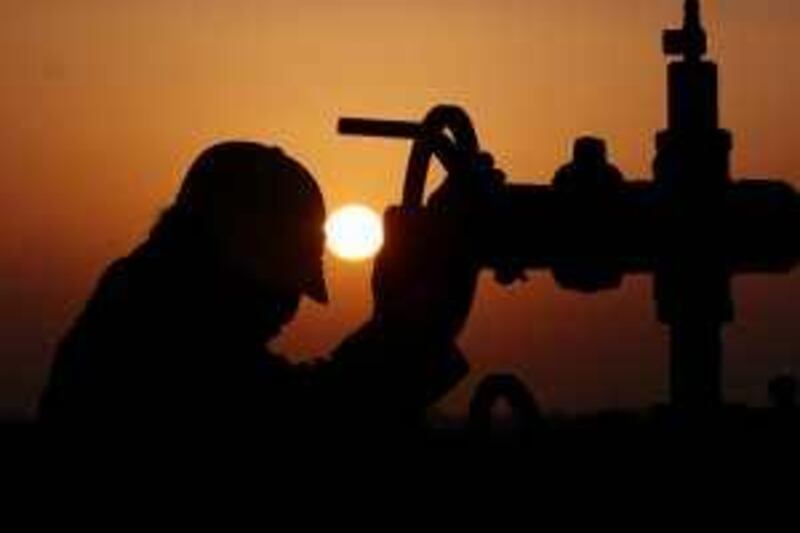The chief of Oman's main gas transportation firm called for the development of a regional GCC gas pipeline network, but said higher local gas prices would be needed to support such a project. "We need an integrated approach to putting a gas network in the area," Yousuf al Ojaili, the chief executive of Oman Gas, told the Gas Arabia Summit in Abu Dhabi yesterday. "Enough studies have been done. We need to move to the next step."
Mr Ojaili said the GCC countries, with combined gas reserves of about 1,500 trillion cubic feet, had enough gas in the ground to fuel the region's future industrial development and economic growth. They also had sufficient funds to develop the region's gas resources and existing gas processing and transportation infrastructure that "just needs expanding". On the other hand, the region faced some major challenges to gas development, especially subsidised domestic gas prices that discouraged investment, he said. "Governments have to start accepting that the gas price will have to be higher. They are going to have to be much higher than US$5 per 1000 cubic feet."
Mr Ojaili also suggested that consumer gas prices in the region be linked to international prices for liquefied natural gas (LNG), as Kuwait already imported the fuel and Dubai planned imports starting later this year. Local gas prices in Saudi Arabia, the biggest GCC economy, are kept at about 75 US cents per 1,000 cu ft, and at roughly $1 per 1,000 cu ft in most other Gulf countries. That is well below the projected $5 per 1000 cu ft cost of sour gas production from Abu Dhabi's Shah field, which Abu Dhabi National Energy Company and the US oil firm ConocoPhillips plan to develop in a $10 billion (Dh36.7bn) joint venture. It is also below development costs for other technically challenging gas deposits in the region, including Omani "tight gas", which is difficult to extract because the gas is held in rocks with extremely tiny pores.
Due to rising local gas demand, Oman nevertheless plans to boost the development of its tight-gas reserves, which are the focus of exploration and development activities that BP and the government-owned Petroleum Development Oman are jointly pursuing in the sultanate. Starting in 2017, the partners expect to produce 1.5 billion cubic feet per day (cfd) of additional gas from Oman, Mr Ojaili said. That compares with the sultanate's total gas output of about 2.3 billion cfd in 2008 and with the Abu Dhabi's current production of 6 billion cfd from gas reserves roughly six times larger than Oman's.
As in the GCC at large, Omani gas demand has risen sharply in recent years due to heavy government investment in infrastructure and industrial development. Together with the UAE, the sultanate imports gas from Qatar via a pipeline network developed by Dolphin Energy, an international consortium led by Mubadala Development, the strategic investment arm of the Abu Dhabi Government. Dolphin provides 18 per cent of Oman's total gas supply and 50 per cent of the gas consumed by the country's Sohar industrial complex, which includes petrochemicals facilities, aluminium and steel refineries and cement plants, Mr Ojaili said.
He said the Dolphin initiative was a "very successful and strategic project" linking three GCC countries that demonstrated the feasibility and potential advantages of developing a broader regional gas transportation network. Nevertheless, Dolphin's hopes of expanding its gas imports to 3.2 billion cfd from about 2 billion cfd currently have been hampered by the moratorium that Qatar has placed on further development of its huge North Field, which contains about 900 trillion cu ft of gas reserves.
Qatar, the world's leading exporter of LNG and the only GCC country not facing a gas shortage, has earmarked most of the gas it plans to pump from the North Field until at least 2014 for overseas customers willing to pay international prices. Even during the current glut of gas supplies worldwide, those are significantly higher than the roughly $1.30 per 1,000 cu ft that Dolphin is understood to pay for its gas imports from Qatar.
@Email:tcarlisle@thenational.ae





